The best TV 2025, chosen by our reviewers for all budgets
From premium OLED sets to great-value bargains, and everything in-between
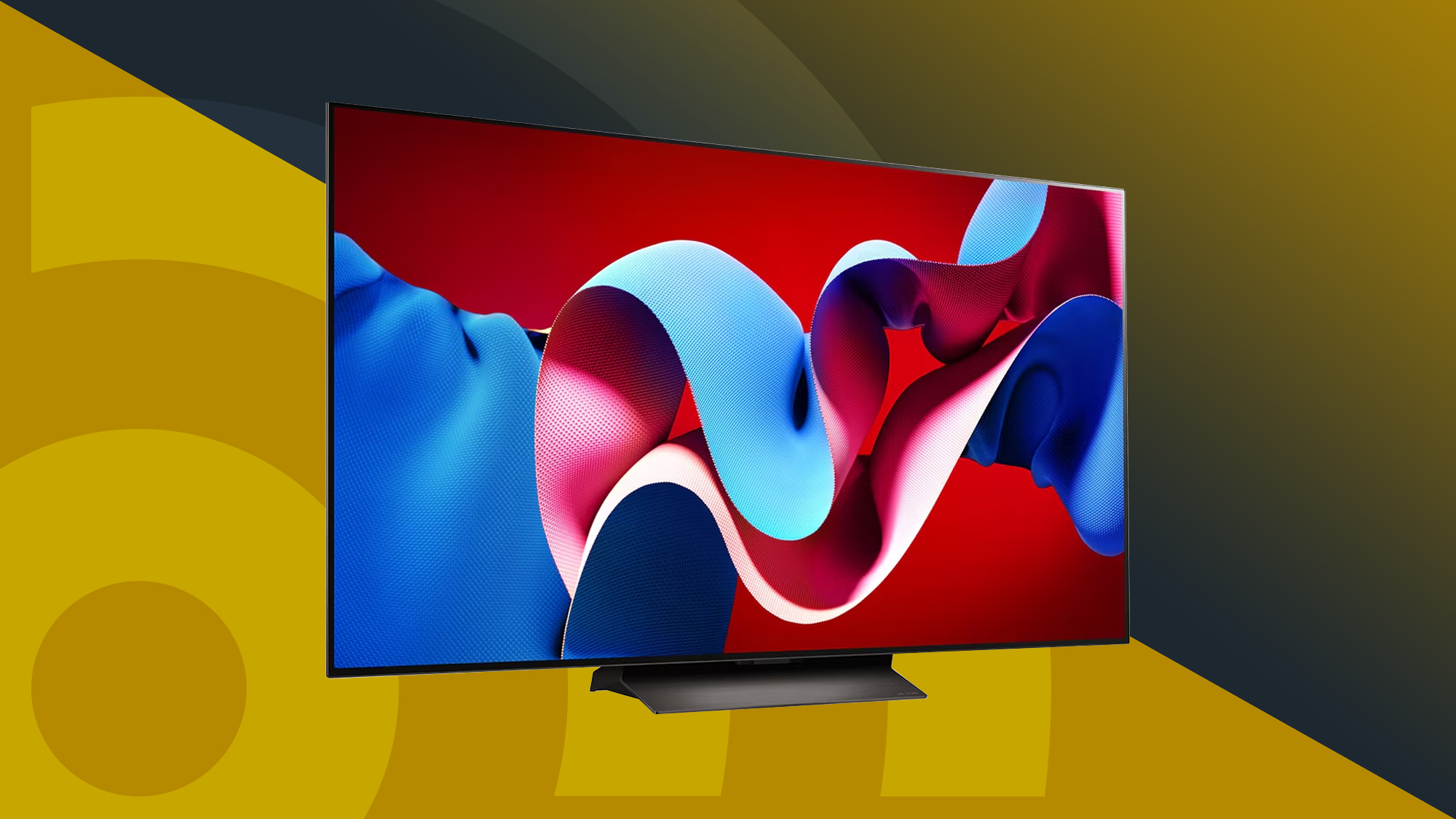
It isn't easy to find the best TV – there are so many options with elaborate screen tech and jargon-filled features – but the good news is that an excellent home cinema experience has never been more affordable.
This guide will help you find the best TV in your budget range, based on our extensive testing experience with these sets. We'll cut the overwhelming number of options down to just the most worthwhile, from cheap options to cutting-edge flagship sets. To make our choices, we're balancing picture quality, features, sound quality, price, and size options. If you're looking for something specific, you might prefer to head straight to our guides to the best gaming TVs, best TVs under £1000, best OLED TVs, or best mini-LED TVs – but here, you can get an overview of everything.
We're confident you'll find the best TV for you in this list – if you don't see a model you have in mind here, bear in mind we may still have tested it, it's just that we think the TVs in this guide offer better value.
The quick list
Want to cut to the chase and find out which TVs are the best? Below, you’ll find a roundup of our choices. You can also jump to a more detailed review of every pick, along with our price comparison tool to help you find the best deals.
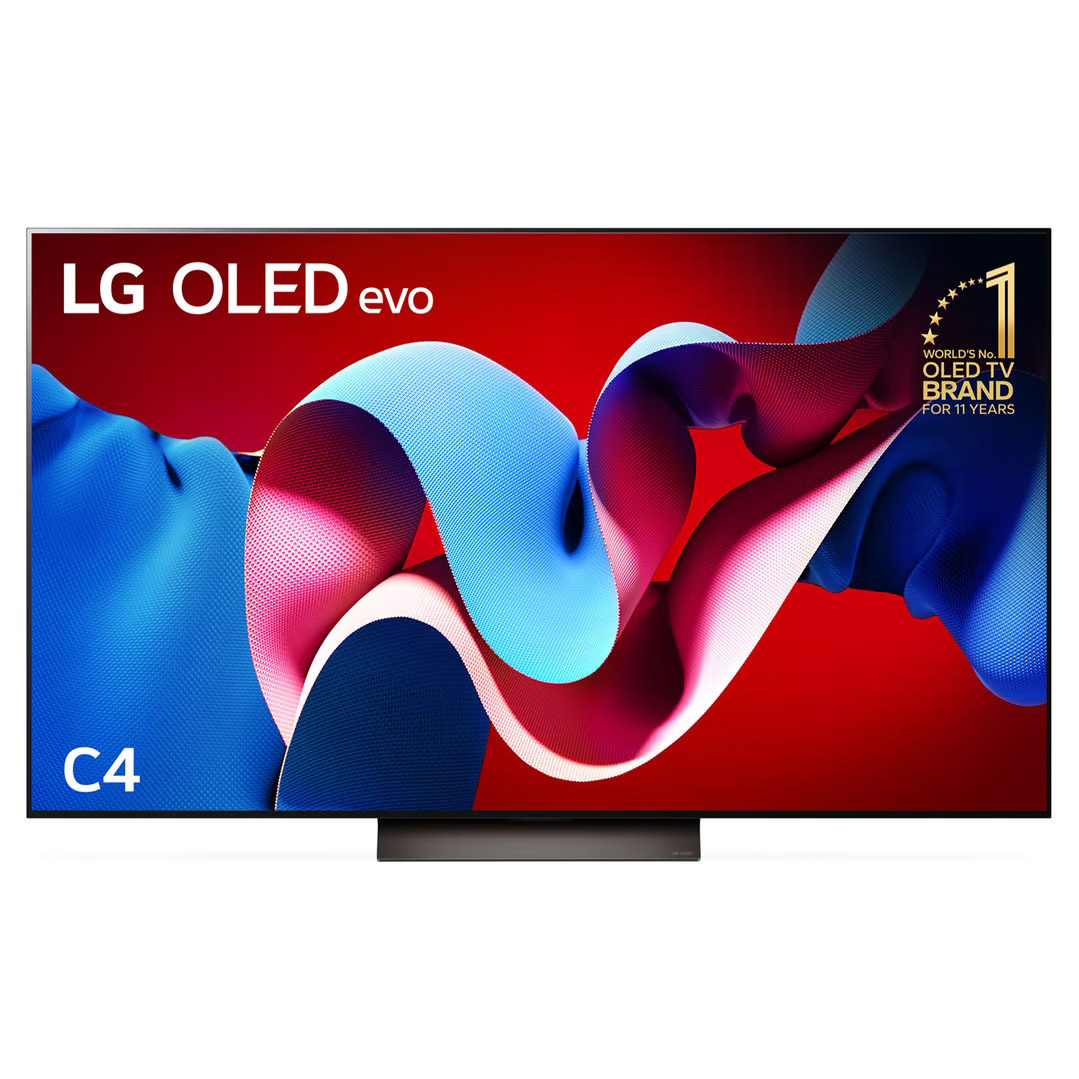
The best TV overall
Gaming, picture quality, an intuitive smart TV platform, and a wealth of sizes from a smaller 42-inch to a large 83-inch; the LG C4 covers all the bases in a way that few TVs do, making it the best-value option overall.
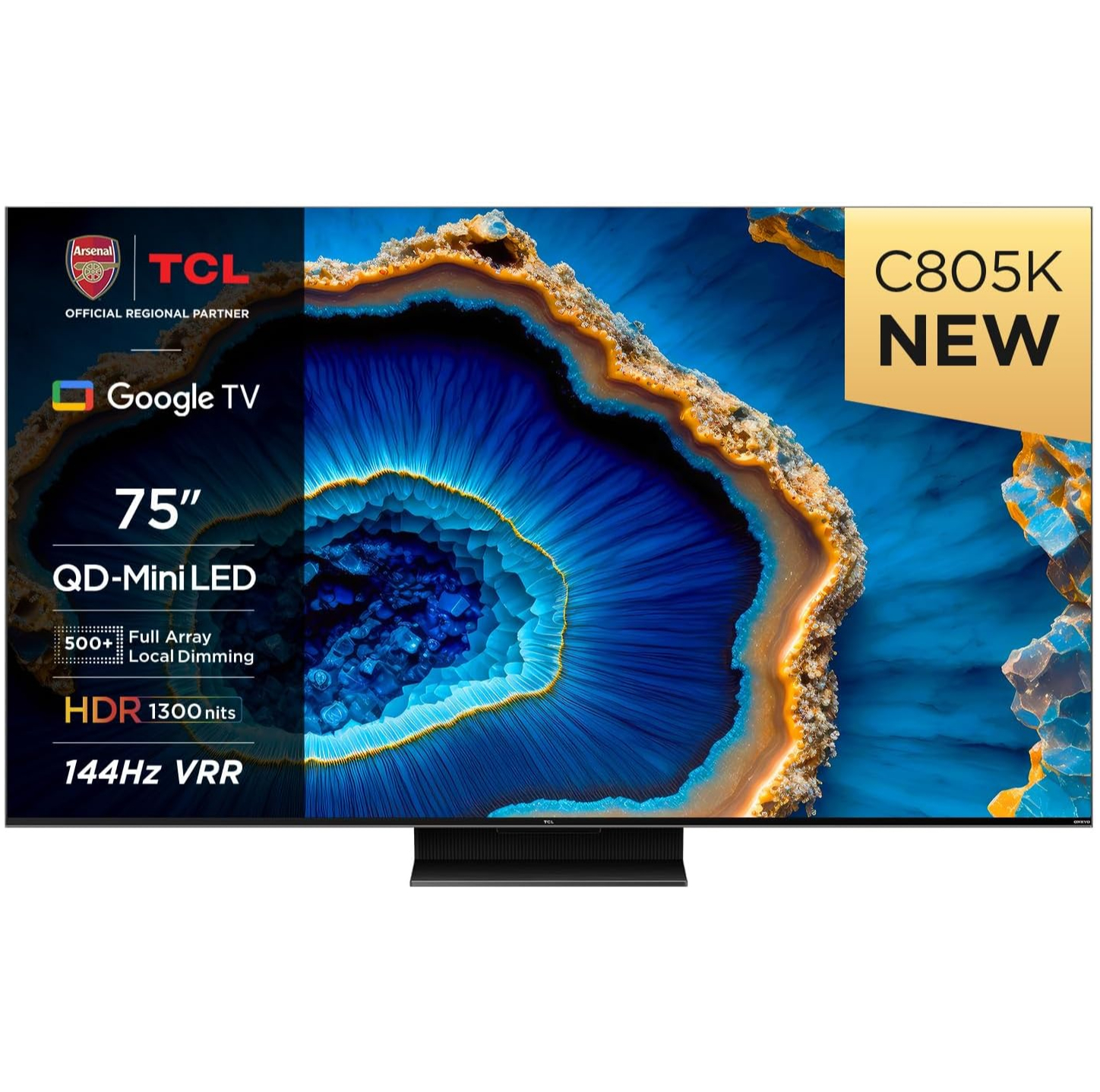
The best budget TV
If you're looking to get a mini-LED TV with a host of gaming features for a fraction of the price you'd expect to pay, the TCL C805 is easily the best option available.
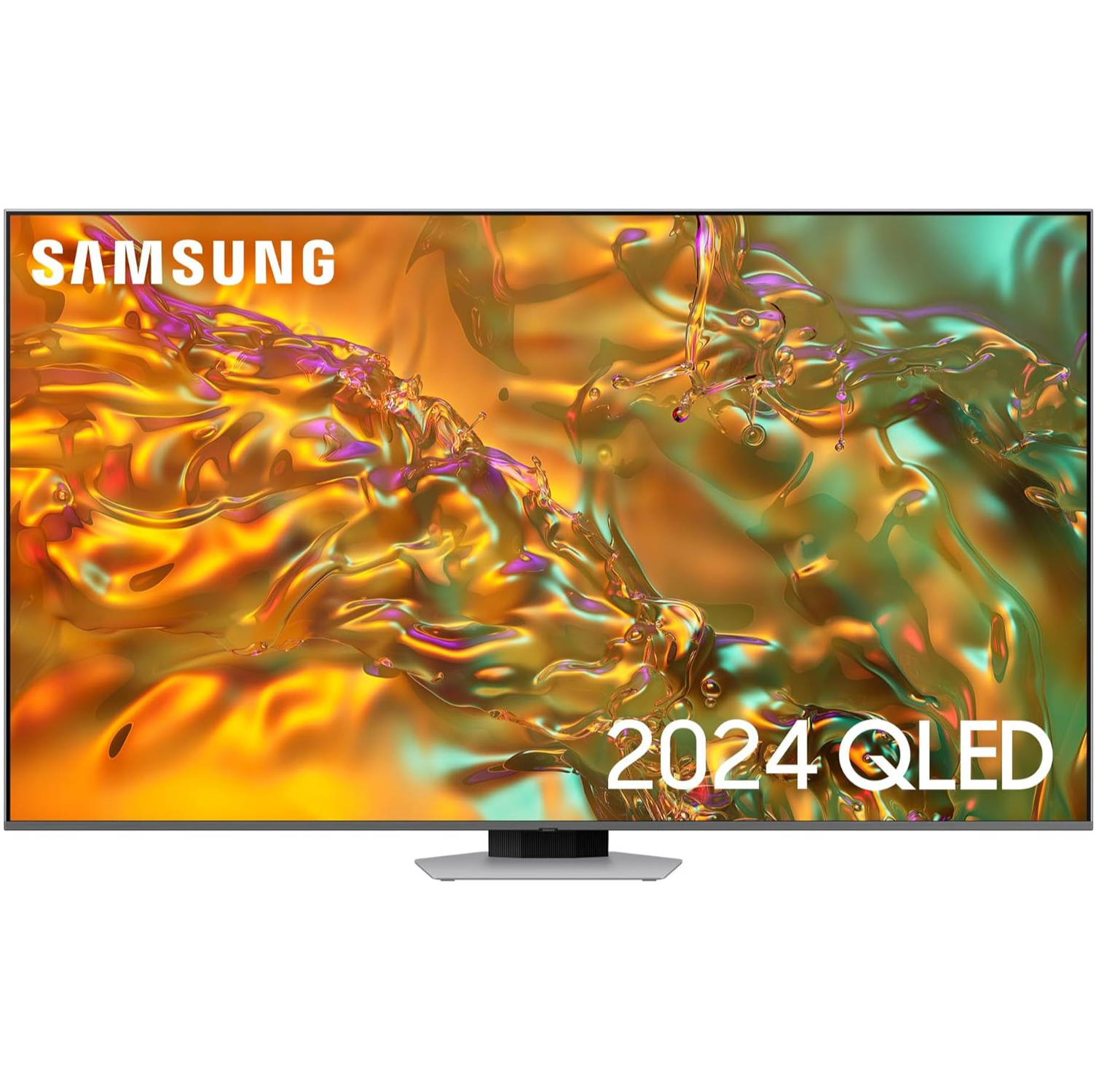
The best mid-range TV
Samsung's top QLED TV has a mid-range price but its premium-level features and performance make it stand out as a bargain in Samsung's TV lineup.
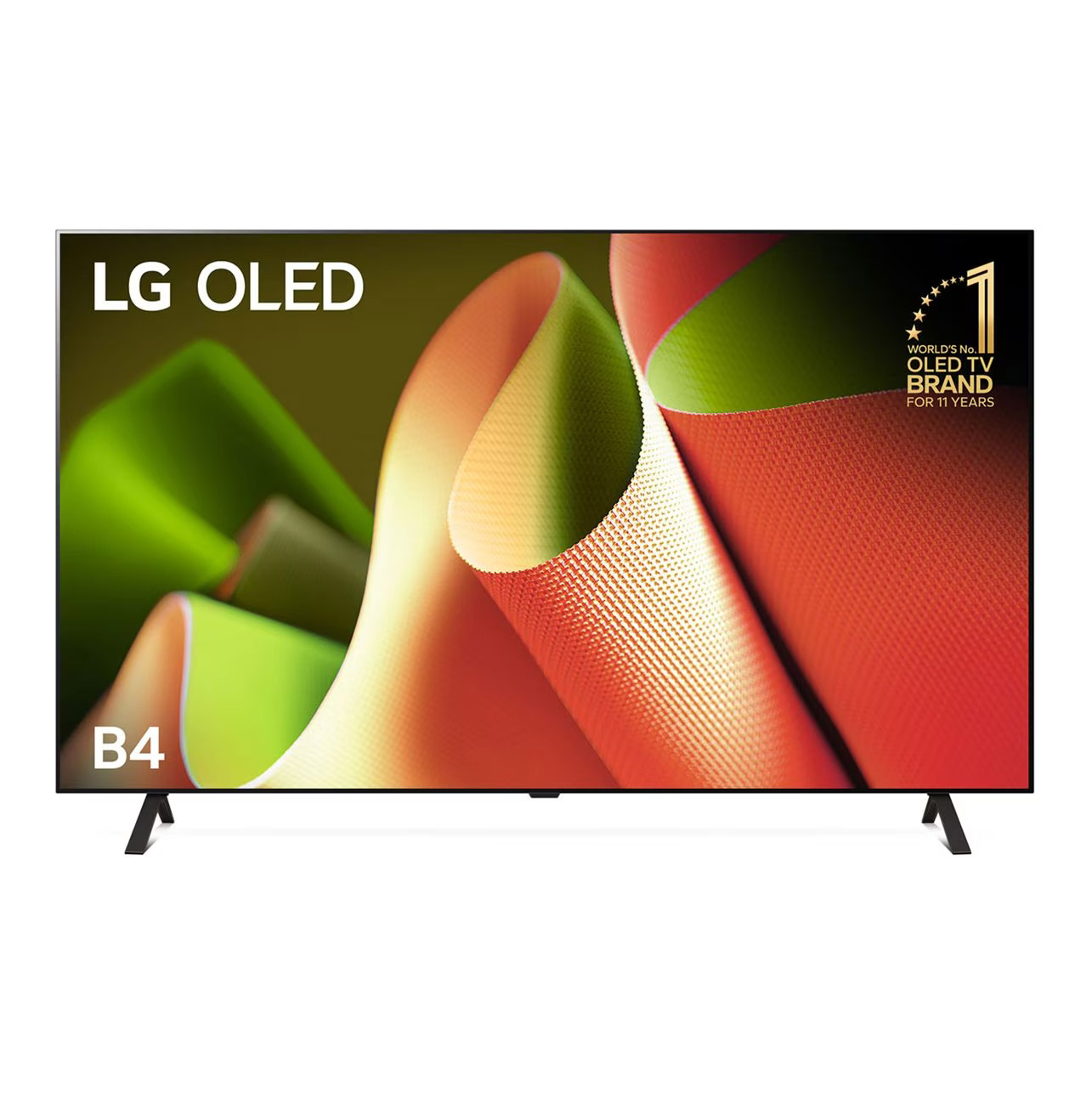
The best cheaper OLED TV
Want an OLED TV for less? The LG B4 is your best option for a 2024 OLED that balances quality, performance and price effectively.
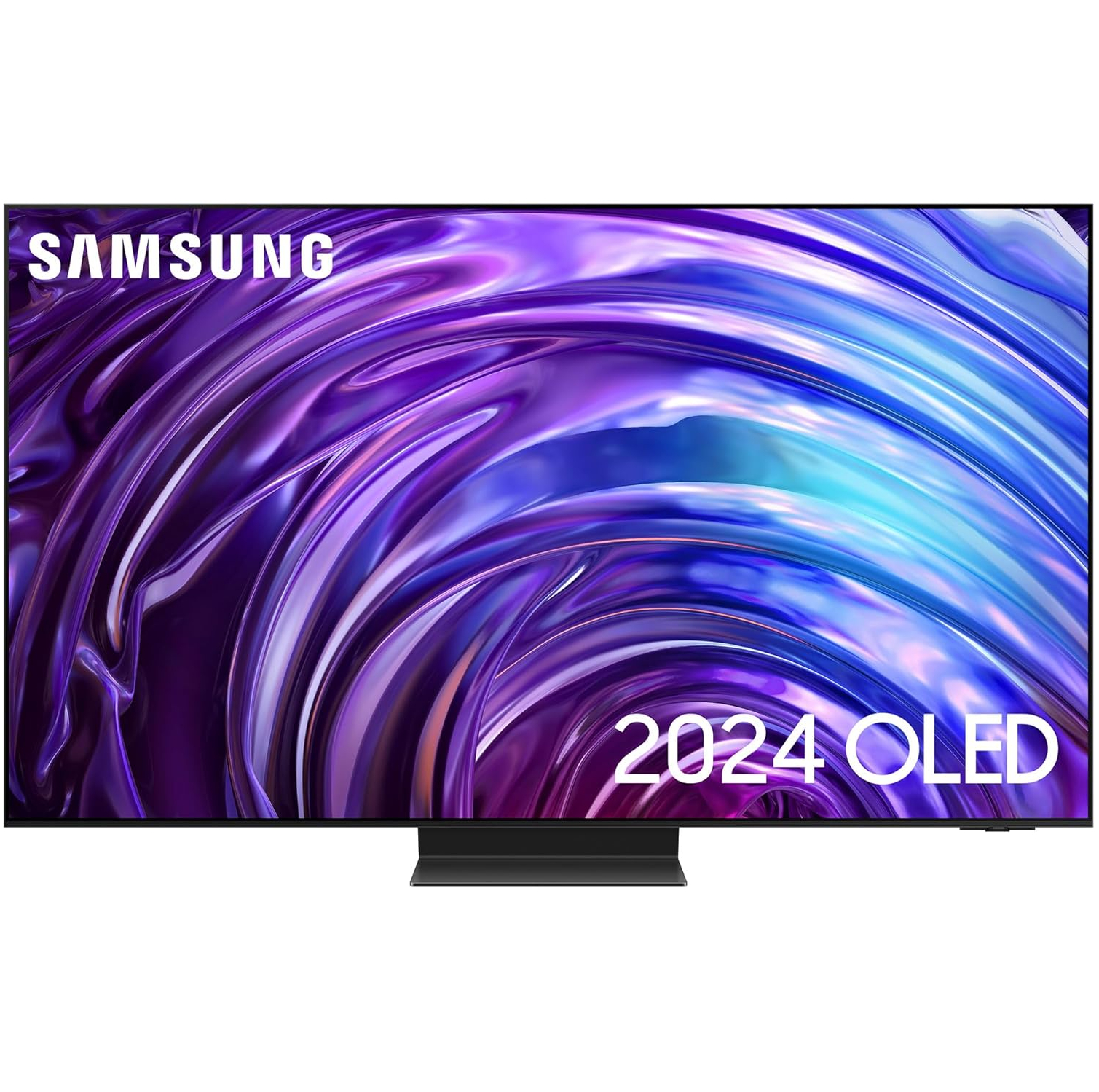
The best premium OLED TV
An incredibly detailed QD-OLED picture with glare beating anti-reflection tech, excellent gaming features and performance and a glorious design mean this is what a premium OLED TV should look like.
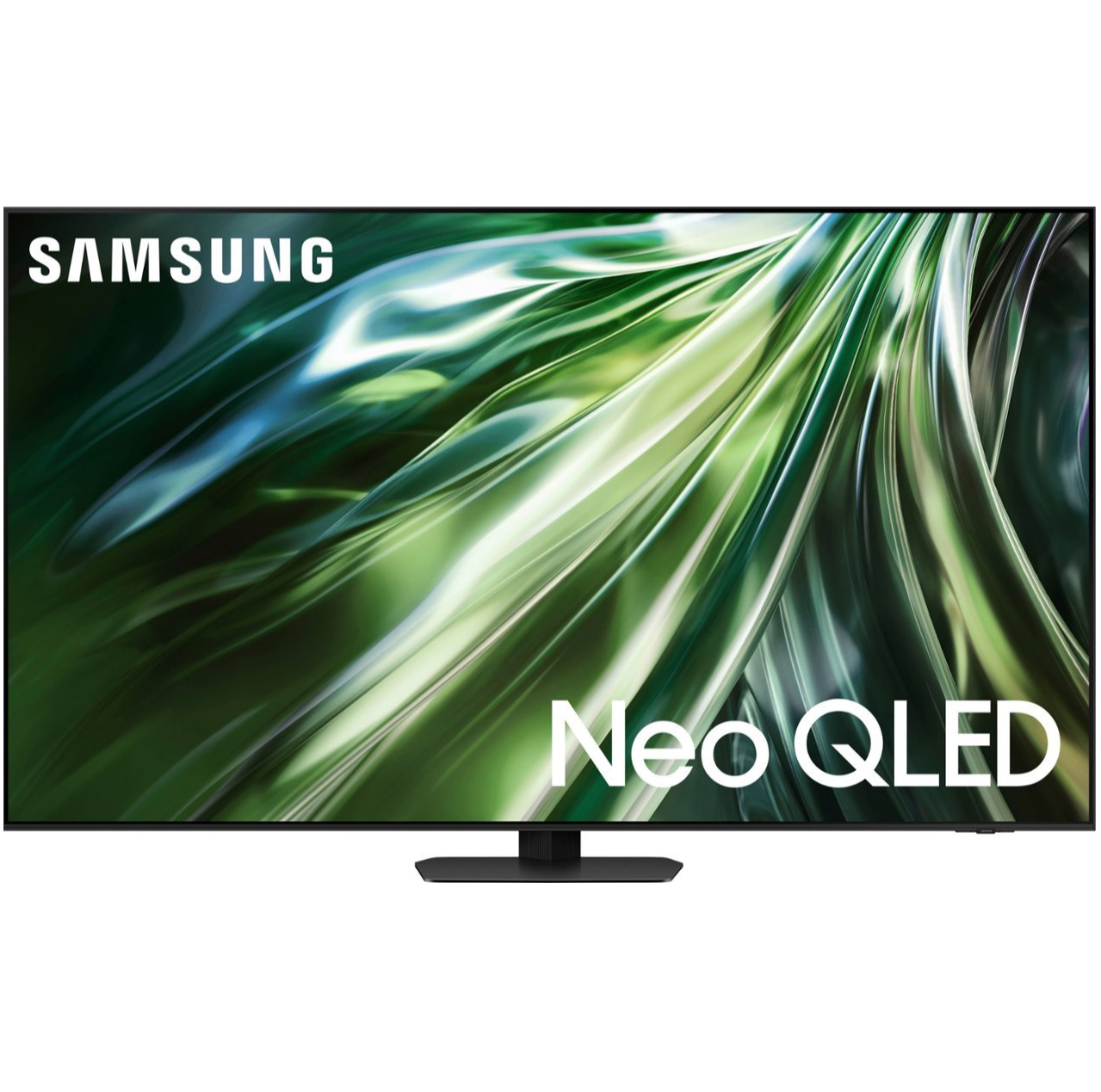
The best bright TV for daytime sports
The Samsung QN90D's high brightness levels make it perfect for daytime viewing. Combined with its superb motion handling, you have a TV that's a must for sports fans.
Load the next products...
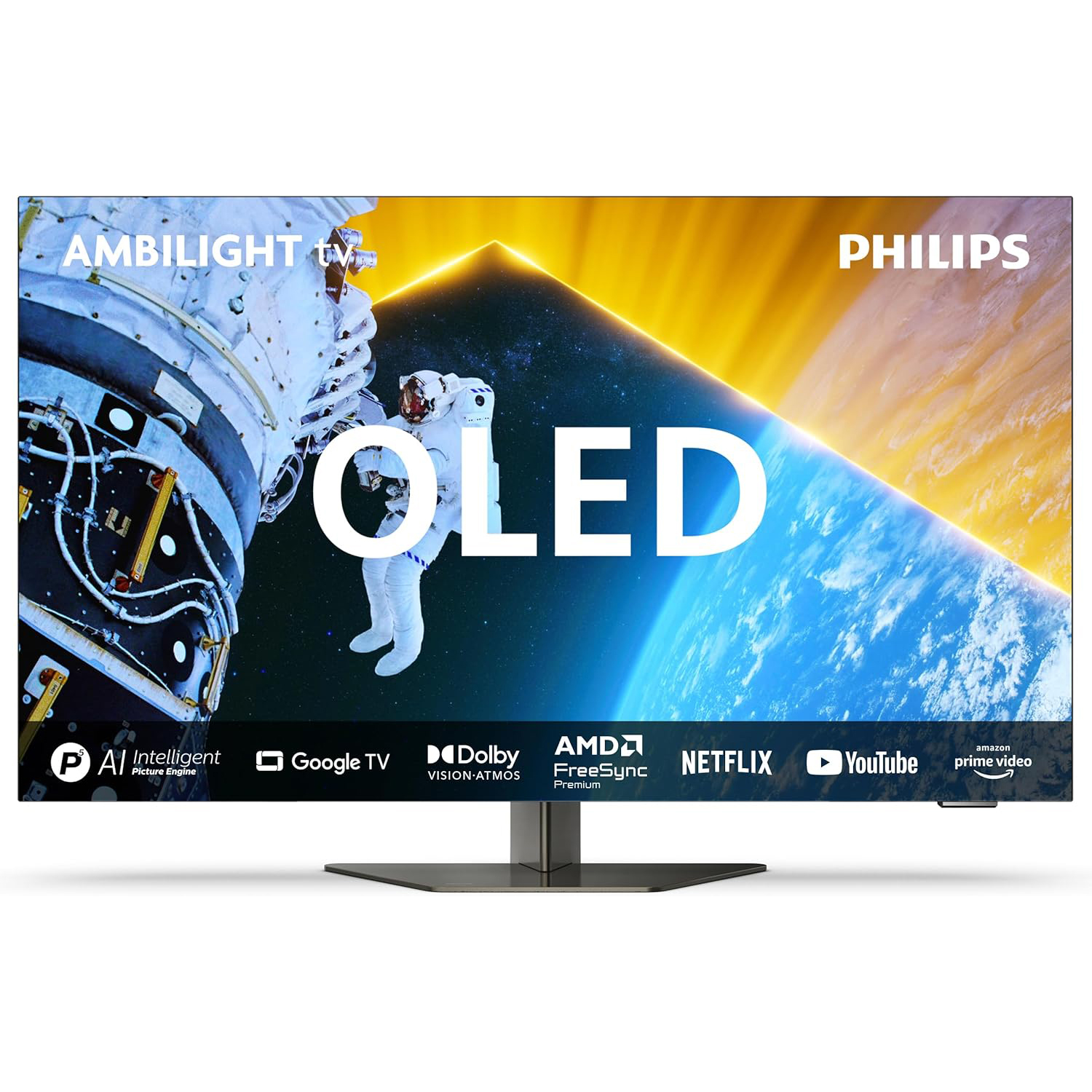
The best TV for total immersion
This is an excellent OLED TV in its own right, but it also includes an Ambilight feature that uses colored LED lights to make the screen seem even bigger than it is.
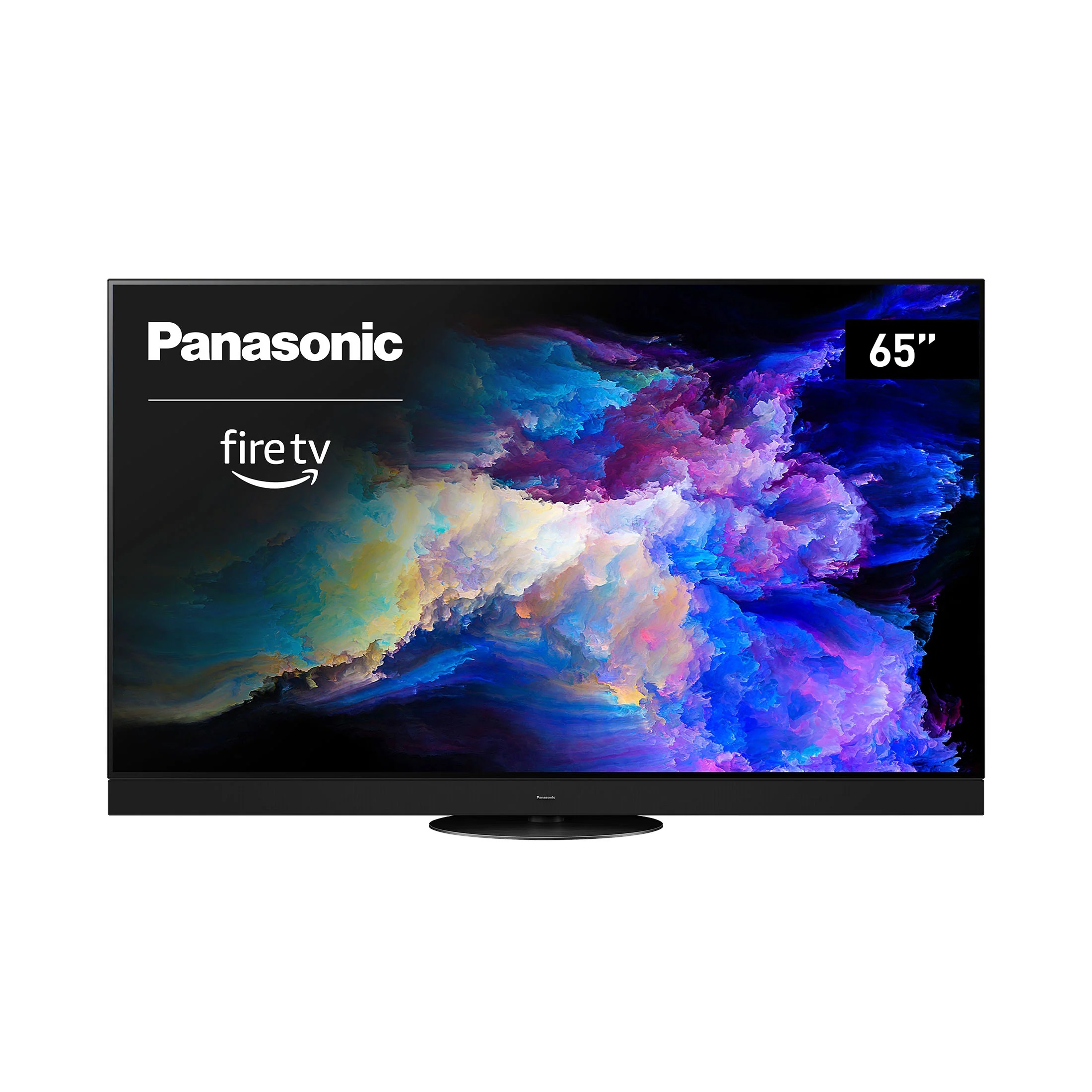
The best TV for sound quality
Looking for a TV that offers genuinely immersive Dolby Atmos sound without a soundbar? The Panasonic Z95A offers better audio (and picture) quality than almost anything else.

I've been testing and reporting on TVs since 2017, but my experience writing about and reviewing screen technology stretches back to 2010. I love seeing all the latest TV releases as they come through our testing rooms, and I shape this guide by working with our reviewers and editors, to agree which TVs we think best fit different needs, or represent the best value.
Recent updates
March 17, 2025
Checked all products against our latest reviews. Added more TVs to our list of other TVs we've tested recently.
The best TVs of 2025
Why you can trust TechRadar
The best TV for most people
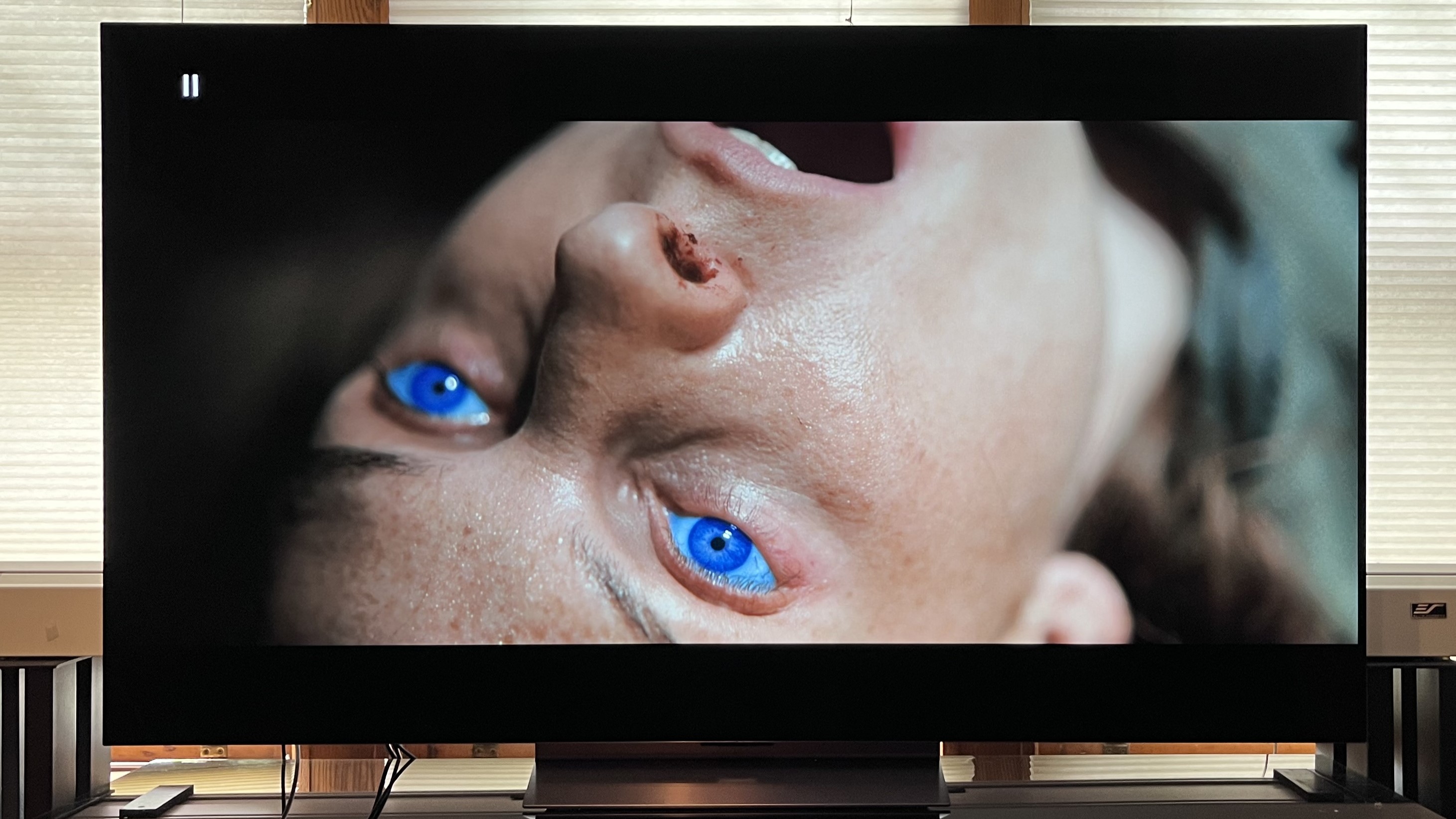
Specifications
Reasons to buy
Reasons to avoid
✅ You like a wide choice of sizes: Ranging from 42-inch to 83-inch, the LG C4 can fit anywhere in the house, from desk to cinema room.
✅ You want a TV for movies and gaming: The LG C4 has very strong picture quality, and gaming features to cover every avenue.
❌ You want the best built-in audio: The LG C4 has decent enough audio performance, but it's not going to beat the Panasonic Z95A (#9 on this list) anytime soon.
❌ You need the brightest OLED TV: The LG C4 offers decent brightness levels for a mid-range OLED, but flagship models like the LG G4 and Samsung S95D are brighter still.
The LG C4 is easily one of the most versatile TVs on the market, delivering excellent picture quality, a user-friendly smart TV platform, plenty of features to keep gamers happy and a 'reasonable for OLED' price tag – all in a wide range of sizes from 42 inches to 83 inches.
Picture quality of the LG C4 is superb. During our testing we marvelled at just how strong detail was, with textures taking on a lifelike look, and how rich contrast was when watching Dune: Part Two, which was also given an extra punch thanks to improved brightness and more dynamic HDR highlights. Even in brighter rooms, the C4 fared well compared to other mid-range OLEDs (which typically struggle in bright rooms) thanks to an effective anti-reflection screen.
The LG C4 is also an excellent TV for gaming. It has a near-full stock of features including four HDMI 2.1 ports that support 4K 144Hz, variable refresh rate (AMD FreeSync and Nvidia G-Sync included), auto low latency mode, and Dolby Vision gaming. Thanks to its Game Optimizer, the C4 also delivers ultra-responsive performance, with a low 9.1ms input lag time in Boost mode according to our tests. Gamers will be more than pleased with what the LG C4 has to offer.
The C4 rounds out its positives with its intuitive webOS smart TV platform and wide range of sizes to suit different environments, ranging from 42-83 inches. While its built-in sound could be better and doesn't compete with the likes of the Panasonic Z95A or Sony Bravia 8, there are few other TVs that cover all the bases so well and offer this level of quality and performance. That's why the LG C4 takes top spot on our list.
Read our full LG C4 review
The best budget TV
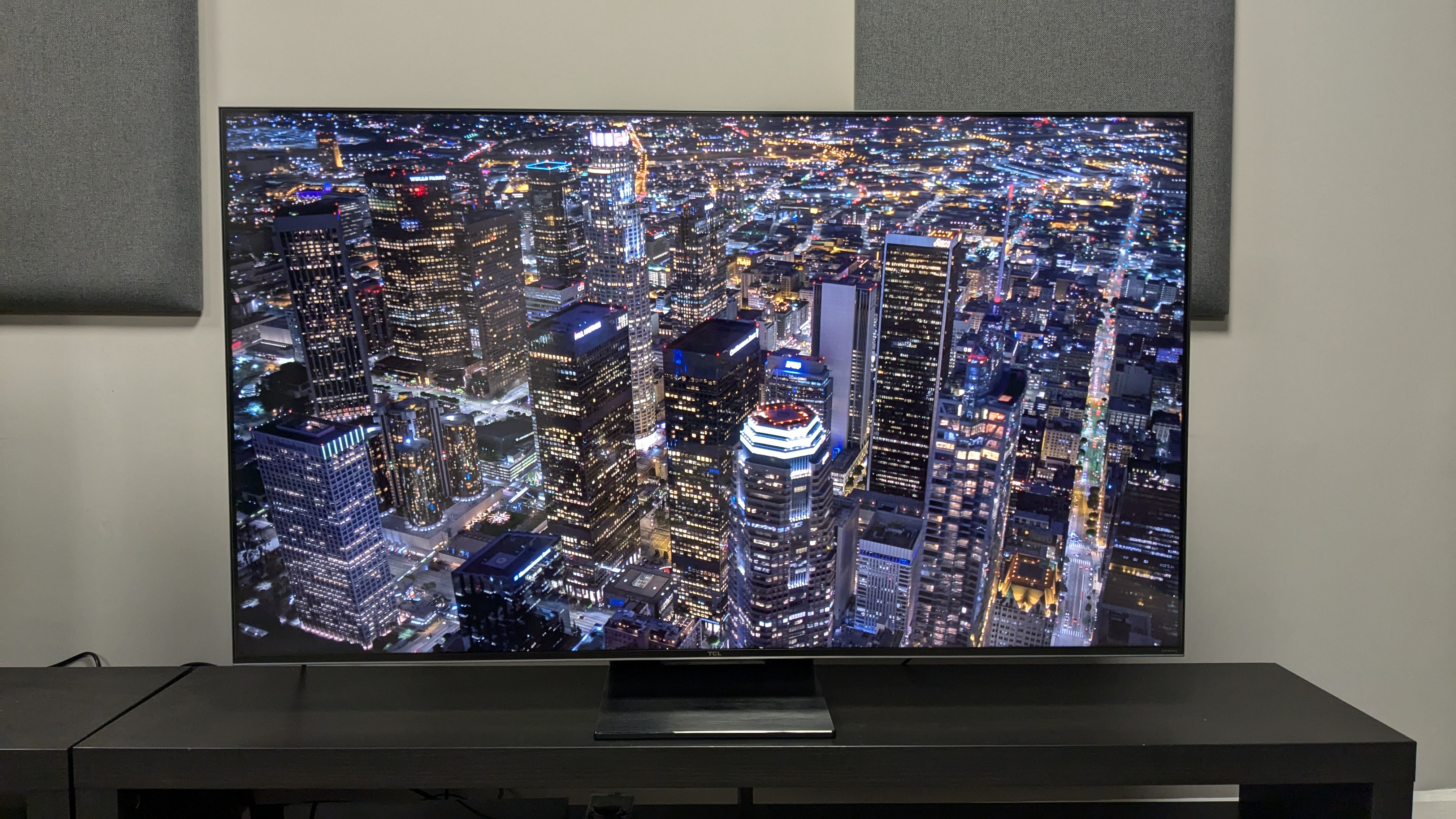
Specifications
Reasons to buy
Reasons to avoid
✅ You want a great picture for cheap: Thanks to its mini-LED backlight, the C805 provides rich contrast for a very affordable price.
✅ You want a great, budget TV for gaming: With an affordable price and 4K 144Hz, VRR, ALLM and Dolby Vision gaming support, the C805 is a top option for budget gaming.
❌ You watch at an angle: Viewing the C805 off-centre reveals backlight blooming and faded contrast that isn't present when viewed face-on.
❌ You want immersive, built-in sound: The C805's speakers provide good levels of bass but are lacking in every other area.
The TCL C805 is the epitome of value. With a mini-LED backlight, it offers picture quality that outperforms its price. It also has a good stock of gaming features and the Google TV smart TV interface.
In our review, we commended the C805's picture quality. It delivered surprisingly strong black levels and contrast, along with more realistic detail and textures than we expected at this price. While its motion does require some setup and viewing angles are limited, as we said in our review "at this price range, it’s tough to be disappointed with the C805’s picture".
Gamers will be pleased with the list of gaming features on offer here, including 4K 144Hz, VRR (AMD FreeSync Premium included), ALLM and Dolby Vision gaming. While its 13.5ms input lag time isn't the best, most gamers will find it suitable enough. Plus, its great picture quality carries across to gaming.
It's not all perfect with the C805, as its limited sound quality means one of the best soundbars might be needed. There are also the picture quality limitations mentioned above, but it delivers a great experience overall, and it is impossible to overlook its affordable price in every one of its sizes, from 50 to 98 inches! When it comes to price vs quality, the C805 demonstrates incredible value and is a top choice for those on a budget.
Read our full TCL C805 review
The best mid-range TV
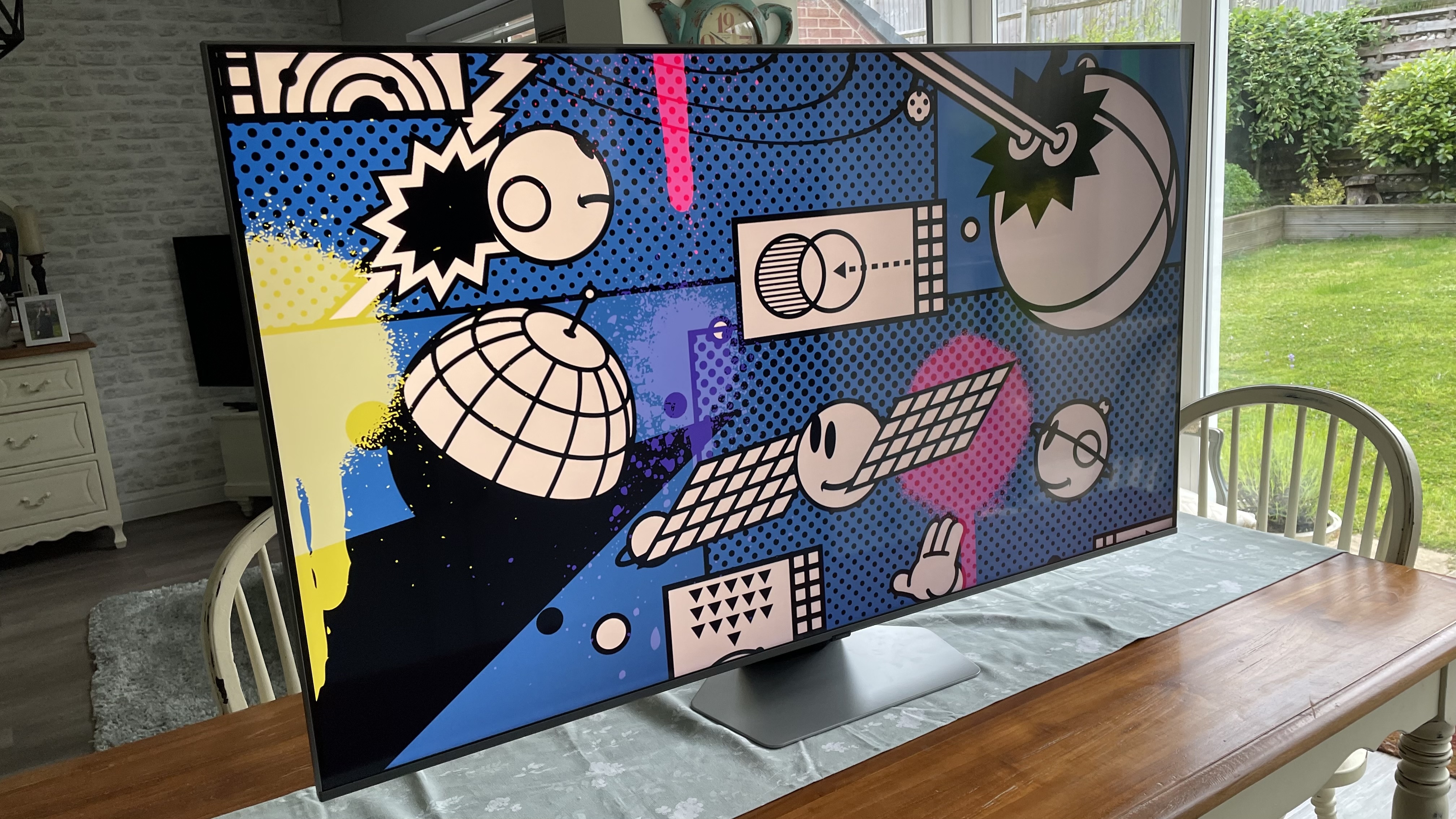
Specifications
Reasons to buy
Reasons to avoid
✅ You want an excellent picture for the money: Colour, brightness and contrast are all top-notch on the Q80D and better than expected at this price range.
✅ You want a great gaming TV: Offering extensive gaming features across all four HDMI ports and all-around great performance, the Q80D is an excellent gaming TV.
❌ You don't want to tweak any settings: The Q80D has a fantastic picture, but its colour out-of-the-box requires some adjustment.
❌ You want Dolby Vision: Same as with all Samsung TVs, the Q80D does not support Dolby Vision HDR for movies or gaming.
Mid-range TVs can sit in an awkward position – offering lesser performance and features than premium models and costing too much compared to budget models. The all-important value factor of features for money is crucial in the mid-range, and this is where the Samsung Q80D comes in, as it covers pretty much every base.
Picture quality on the Q80D exceeds its price tag. Contrast levels are excellent, with black tones displayed accurately and bright highlights handled well. Colours, once set up correctly, are bold and vibrant, especially when the TV is fed 4K sources, and give it a 3D feel. Some backlight blooming is present, mainly when viewed off-centre, but all-in-all the Q80D's picture is brilliant for the price.
Samsung's top-end QLEDs have always done a great job when it comes to gaming and the Q80D is no exception. Its four HDMI 2.1 ports all support 4K 120Hz, VRR (including AMD FreeSync Premium) and ALLM, and there's also Samsung's Gaming Hub and a low 9.8ms input lag time.
The Q80D has surprisingly good built-in sound, with a large soundstage and good sound effects placement. It also has Samsung's own Tizen smart TV platform, which provides access to plenty of content and gives better-tailored recommendations than previous Tizen iterations.
All is not perfect, as the Q80D suffers from some backlight blooming and more limited viewing angles than higher-priced TVs. There's also no Dolby Vision HDR support, but for its mid-range price, the Samsung Q80D has seriously impressive gaming features and great performance across the board.
Read our full Samsung Q80D review
The best cheaper OLED TV

Specifications
Reasons to buy
Reasons to avoid
✅ You want a versatile OLED picture: With good motion handling, rich contrast and vibrant colors, the B4 is great for both movies and games.
✅ You want excellent gaming performance: The LG B4 delivers great gaming with a low input lag time and a list of next-gen features found on the best gaming TVs.
❌ You want high brightness: The B4's peak brightness levels are below that of more premium OLED TVs and even budget mini-LEDs.
❌ You need the best built-in sound: While solid enough, the B4 does not have the most dynamic built-in sound, falling short of other sets on this list such as the Panasonic Z95A and Philips OLED809.
The LG B4 is an affordable 2024 OLED TV that delivers solid picture quality, excellent gaming features and performance and a great smart TV platform while keeping costs down compared to more premium TVs. It may not beat mid-range or premium OLEDs, but the B4 delivers for the price you pay.
Picture quality is very good on the LG B4 overall. In our review, we found that its contrast and black levels were rich, it displayed vivid yet accurate colors, and it did a great job with fast-motion scenes. The B4's lower brightness compared to more premium TVs means its picture doesn't have the same dynamic punch, but the B4 is still versatile enough that it can cover all the bases.
Gaming is well covered by the B4, with four full-featured HDMI 2.1 ports that support 4K 144Hz, Dolby Vision gaming, VRR (including AMD FreeSync Premium and Nvidia GSync) as well as a low 9.1ms input lag time. Combined with its picture quality, the B4 is an excellent companion for gaming.
The B4 does fall short with its built-in audio quality, which lacks the weight and immersive nature of the best TVs for sound, but for the price it sits at, which is significantly cheaper than other OLEDs, the B4 is superb bang for your buck. For those looking for a cheaper OLED, this is it.
Read our full LG B4 review
The best Premium OLED
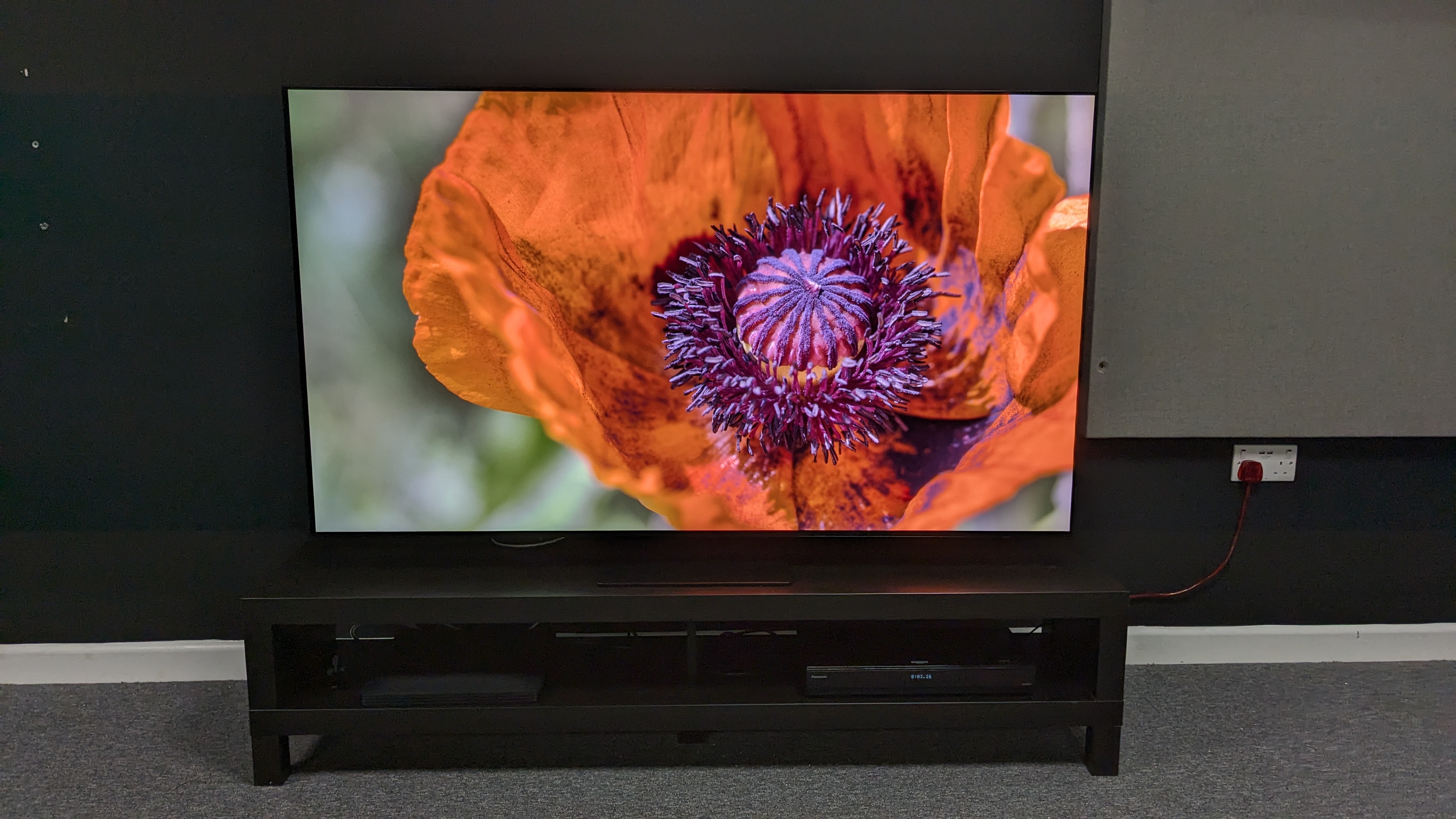
Specifications
Reasons to buy
Reasons to avoid
✅ You want incredible picture detail: The S95D's combination of a QD-OLED display panel and AI processing creates highly realistic details and textures.
✅ You want a beautifully designed TV: The S95D's stand design gives it a 'floating' appearance, and its One Connect Box for cable management results in a trim profile.
❌ You need Dolby Vision: The S95D has excellent picture quality but does not support Dolby Vision for gaming or movies.
❌ You are on a budget: Even though the S95D justifies its cost, it is still a premium OLED TV with a high price tag that will stretch budgets.
The Samsung S95D is the company's flagship OLED TV for 2024. Utilizing QD-OLED like its predecessor, the Samsung S95C, it offers outstanding picture quality and gaming performance plus a new anti-reflection tech that improves viewing in brighter environments.
On the S95D, images take on a realistic depth that creates a lifelike effect. Colors are dynamic but natural, and it has the deep blacks and powerful contrast OLED fans look for. As a bonus, it carries a high peak brightness, measuring 1,868 and 1,688 nits on a 10% HDR window in Standard and Filmmaker Mode respectively, making this one of the brightest OLEDs available.
Samsung introduced its new OLED Glare Free tech with the S95D. This uses a matte screen to reduce reflections from light sources and it works wonders, with pesky reflections filtered to a faint haze on screen, even in the brightest rooms.
Gaming has become a real strong suit for Samsung TVs and the S95D is no different. It has four kitted-out HDMI 2.1 ports that support up to 4K 144 Hz input and VRR including AMD FreeSync Premium Pro. With a built-in Gaming Hub to house all gaming apps and settings in one place, the S95D carries all the features a gamer could need.
The S95D is also a beautifully designed TV, with a 'floating' appearance and good built-in audio. It's undoubtedly pricey, but with the new features and improved picture quality, it more than justifies its cost - it's easily the best premium TV on the market.
Read our full Samsung S95D review
The best TV for sport
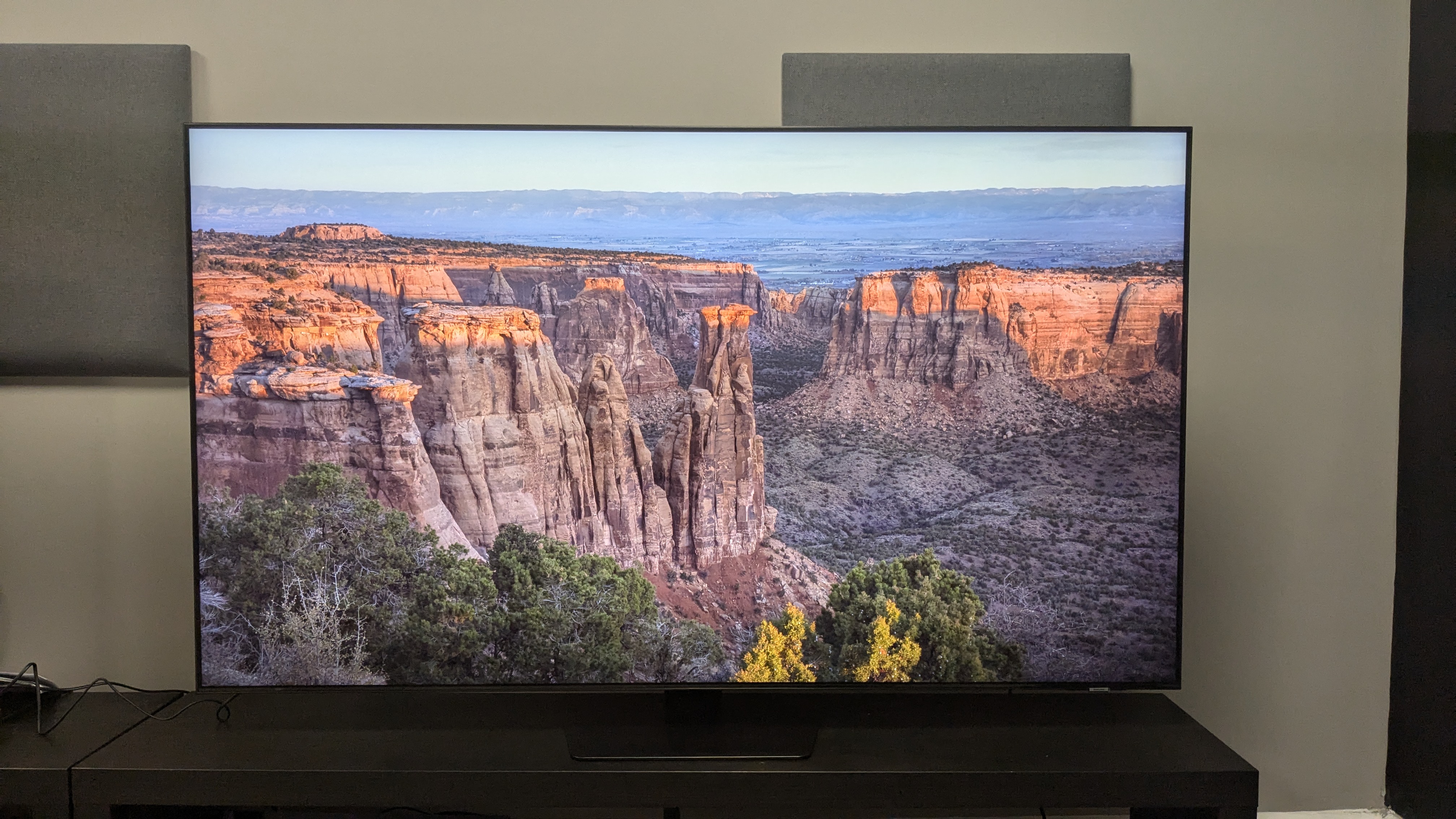
Specifications
Reasons to buy
Reasons to avoid
✅ You want a great TV for sports: With high brightness and excellent motion handling, the QN90D is an ideal TV for any sports fans
✅ You want a great TV for gaming: The QN90D's four HDMI 2.1 ports support 4K 144Hz, VRR and more, making it ideal if you own multiple game consoles.
❌ You want the best value TV: The QN90D faces strong competition from well-featured budget mini-LED TVs from Hisense and TCL.
❌ You want Dolby Vision HDR: Like all Samsung sets, the QN90D doesn't support Dolby Vision HDR for gaming or movies.
With its high peak and fullscreen brightness levels and stellar motion handling, the Samsung QN90D asserts itself as the best TV for sports fans, especially those who watch in brighter rooms.
When we tested the QN90D, we found that Soccer and Rugby streams were "expertly handled" even without the aid of any motion settings in the picture menu. The QN90D also delivered for movies, displaying bold colors and "impeccable" detail. Its contrast, too, was great, despite some backlight blooming and mild fading when viewed off-center.
Gaming is another QN90D strength. It comes with four HDMI 2.1 ports that support 4K 144Hz, VRR (including AMD FreeSync Premium Pro), HGiG and ALLM. It also has Samsung's fantastic Gaming Hub, which makes all gaming-related features on the TV easily accessible. We described gaming on the QN90D as "a breeze" in our review, praising the smooth gameplay thanks to its low 9.1ms input lag time.
While the QN90D does face competition, with the Hisense U8N in particular giving the QN90D a run for its money by delivering higher brightness for less, none can top the QN90D's brilliant motion handling, which easily makes the QN90D the top choice for sports fans.
Read our full Samsung QN90D review
The most immersive TV
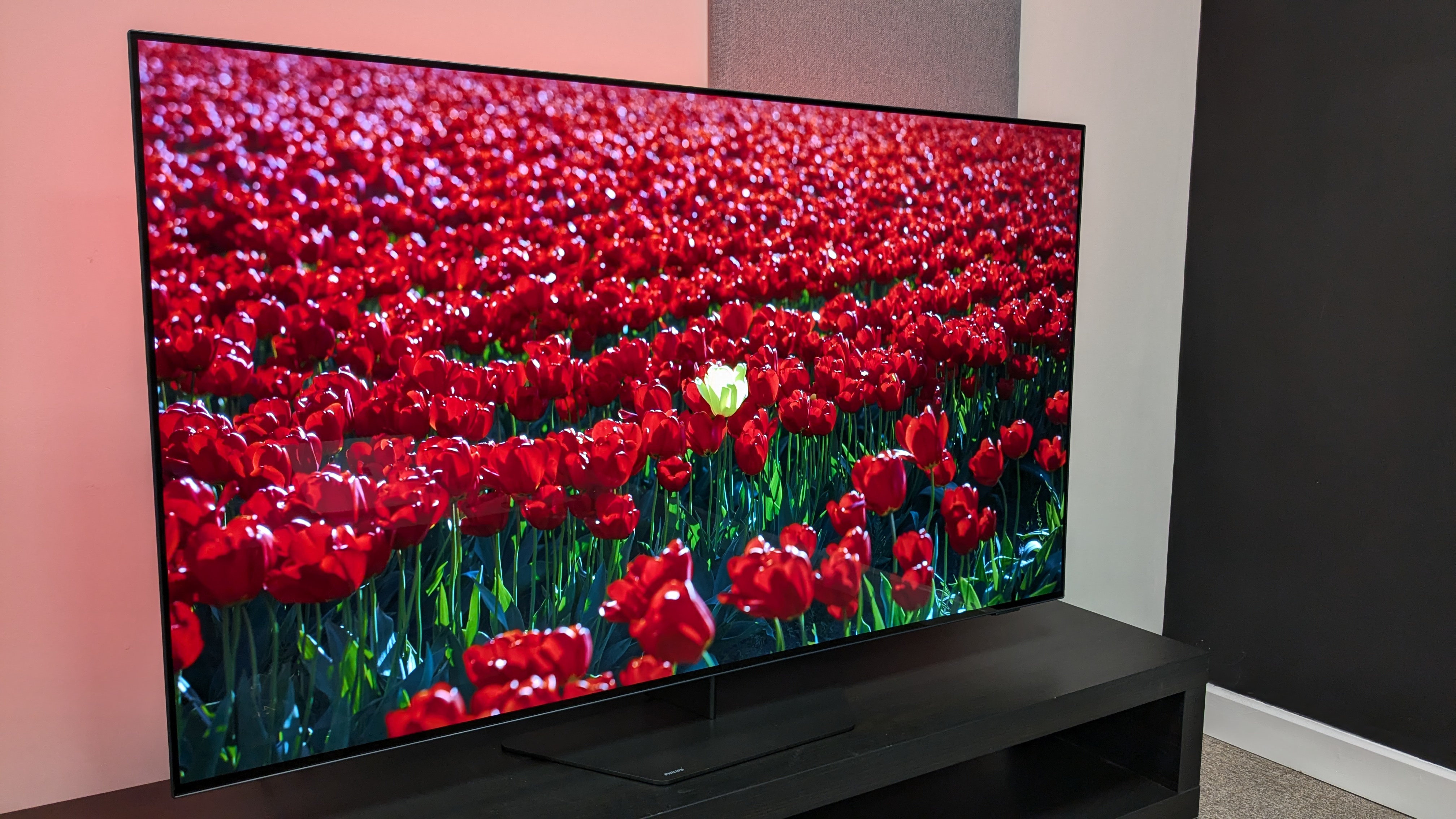
Specifications
Reasons to buy
Reasons to avoid
✅ You like the look of Ambilight: It makes the picture feel even bigger and more immersive. No other TV brand has this tech built in.
✅ You want a powerful, all-around performer: The OLED809 delivers a dynamic, colourful picture, accurate built-in sound and a wealth of gaming features.
❌ You want Freeview Play and its apps built-in: Unfortunately, the OLED809 is lacking apps like BBC iPlayer and ITVX, but this can be solved with a streaming device like a Fire TV Stick.
❌ You watch a lot of lower-resolution content: While upscaling from HD is fine, standard-definition TV shows or movies don't receive the best upscaling on the OLED809.
The Philips OLED809 is a real all-rounder, delivering spectacular picture quality with rich contrast and vibrant colours, a near-full suite of gaming features and expansive built-in sound. But it's the built-in Ambilight feature that makes the OLED809 that much more unique and immersive.
In our review of the Philips OLED809, we were particular fans of its Ambilight feature, complimenting how it added an extra dimension to anything played on screen, with particular highlights involving colourful movies such as Star Wars: The Last Jedi. It's a feature that makes the OLED809 stand out in cramped mid-range OLED TV market.
The OLED809 also delivers when it comes to picture quality, with exceptional colours, rich contrast and deep black levels. We also noted that details and textures are incredibly refined and lifelike, giving even something as simple as clothing added accuracy. While lower-resolution sources didn't benefit much from upscaling, feed the OLED809 4K sources and you won't be disappointed with what you see.
The OLED809 also flexes its immersive prowess with its built-in sound. While not the best built-in sound (check out the Panasonic Z95A below), the OLED809's sound impressed, thanks to its excellent placement and accuracy with even the most subtle of sound effects. The OLED809 also serves well as a gaming TV, with Dolby Vision gaming, 4K 120Hz, VRR (AMD FreeSync Premium included) and ALLM all supported. The OLED809 really is a complete package.
Read our full Philips OLED809 review
The best TV for sound
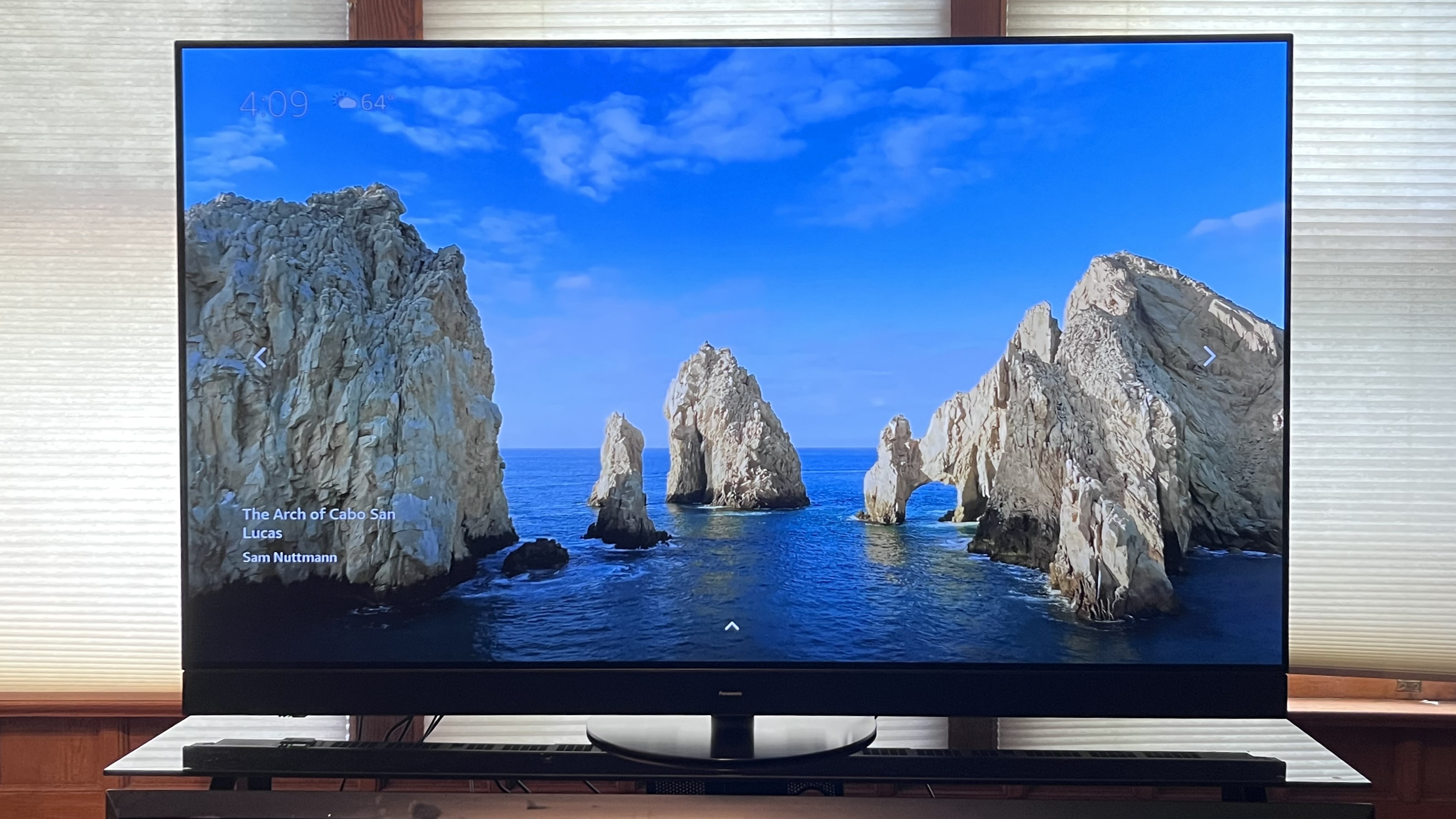
Specifications
Reasons to buy
Reasons to avoid
✅ You want powerful, immersive built-in sound: The Z95A delivers punchy, immersive and powerful sound thanks to its built-in 5.1.2-channel speaker system.
✅ You want a TV with spectacular pictures: The Z95A's picture quality is nothing short of phenomenal, with superb detail and excellent contrast and colour.
❌ You don't want to spend a premium price: The Z95A may be an incredible TV, but it is noticeably pricier than rival flagship OLEDs such as the Samsung S95D and LG G4.
❌ You want a comprehensive remote: Moving to Fire TV means the Z95A now comes with a flimsy, bare remote compared to Panasonic's previously supplied remotes.
Sound quality is never expected to be fantastic in TVs nowadays, but some models place the same importance on sound as they do picture and the TV that demonstrates this better than any other is the Panasonic Z95A.
We were impressed by the quality of the Z95A's built-in 5.1.2 channel speaker system, noting that its "sound is powerful and immersive enough that you could easily get away without using one of the best soundbars". It delivered clear dialogue and believable Dolby Atmos effects, which were given a real sense of space. It's also packed with sound features such as Sound Focus mode to really fine-tune the sound to your tastes and environment.
Panasonic's OLEDs always deliver incredible picture quality and the Z95A is no different. We described its colour reproduction as "bold and detailed" and we were also impressed by its deep black levels, strong contrast and high brightness (for OLED) levels that bested the LG G4. Its upscaling of lower-resolution content was also effective and even its motion handling was superb. Picture quality is just another highlight for the Z95A.
Gaming is also well covered by the Panasonic Z95A, with 4K 144Hz, VRR (AMD FreeSync and Nvidia GSync), ALLM and Dolby Vision gaming all supported. While its 12.6ms input lag time doesn't quite beat the top gaming TVs, it's still a very good result that adds another feather to the Z95A's cap.
Although the Panasonic Z95A is a superb TV, it does carry a premium price, costing significantly more than rival OLEDs such as the LG G4 and Samsung S95D, but if you have the cash to pay for it, the Z95A is worth the investment.
Read our full Panasonic Z95A review
More TVs to consider
Hisense U6N: A competitor to the TCL C805 as a budget mini-LED model. We rate the TCL model as delivering better value, but the U6N is a very strong TV in its own right, especially if you catch it with a big discount. Here's our full Hisense U6N review.
Hisense U7N: If you think a mini-LED would suit your room brighter room better but find that your budget can't stretch to the Samsung QN90D, the Hisense U7N serves as a great, more affordable option. It delivers very good picture quality and a decent stock of gaming features that outshine its budget price tag. However, the Hisense U7N couldn't quite make the list because the TCL C805 and Samsung Q80D just offer that little it better performance. But, the Hisense U7N is definitely still one to consider. Read our full Hisense U7N review.
Hisense U8N: An excellent TV in so many ways, delivering super-bright pictures with rich HDR colors and extremely good contrast handling. It's also very well-equipped for gaming, as we explored in our Hisense U8N review. However, the Samsung QN90D is only marginally more expensive, and has even stronger motion handling, contrast control and better viewing angles.
LG G4: A phenomenal flagship OLED TV, the LG G4 offers a premium experience thanks to its stunning picture quality, full suite of gaming features, engaging built-in sound and appealing design that make it perfect for wall-mounting. If you're after a elite OLED TV, the LG G4 won't let you down. The only reason it doesn't make this list is because the incredible Samsung S95D, which broke the mould with its innovative OLED Glare Free tech. But, if you're an LG fan, the LG G4 is a fantastic TV. Read our full LG G4 review.
Philips OLED909: A high-end TV with the same OLED panel type as the LG G4, plus powerful built-in Bowers & Wilkins sound. Its picture quality is immaculate, and its audio is broad, clear and impactful – and it's all supported by Philips' excellent Ambilight, as used on the OLED809 we recommend within the list. But it's pricey compared to the LG G4 or Samsung S95D, and not everyone wants this kind of built-in speaker system. As our full Philips OLED909 review explains, it's also a little weaker when it comes to gaming tech, and its Google TV built-in software.
Philips OLED959: A quite specialist TV, matching very high-end OLED image quality and a powerful system with a dedicated freestanding mount. It's elite AV as furniture, for the design-conscious, and if that's what you want, it's a wonderful piece of kit – but it comes at a high price for quite a niche desire. It also uses a different version of the Ambilight tech that we found too fussy in our full Philips OLED959 review.
Samsung Q60D: If you're looking for a budget QLED TV that delivers solid picture quality, the Samsung Q60D is an excellent option. While it lacks some features, it comes in a wide range of sizes and often for a discounted, affordable price. It doesn't make our list because the TCL C805 offers brilliant mini-LED performance for a justifiable price increase. But the Q60D still serves as an excellent affordable TV. Read our full Samsung Q60D review.
Sony Bravia 8: The Sony Bravia 8 is a superb, mid-range OLED TV that delivers spectacular picture quality with realistic textures and dynamic colours and it has a great list of gaming features. But, it's the Bravia 8's built-in sound that beats most other TVs, as its immersive and powerful out-of-the-box. It doesn't make our list because the LG C4 beats it in other areas, especially value, and the Panasonic Z95A delivers better overall sound quality. The Bravia 8 is not a TV to be ignored though. Read our full Sony Bravia 8 review.
TCL C855: The TCL C855 was one of 2024's most surprising TVs, delivering excellent picture quality with superb contrast and black levels, surprisingly realistic details and bold colours. It also delivers great gaming performance, all for a fair price. The reason it doesn't make this list however is because the Samsung QN90D does everything a little better, despite a higher price tag. But, the TCL C855 is still a superb TV that should be on your list for consideration. Read our full TCL C855 review.
What's the best TV brand?
This is a question people ask a lot, since it's hard to know where to start with TVs in general, and this gives a bit of a foothold. Unfortunately, it's a very complicated question! The best TV brand power dynamic has flip-flopped a bit over the past few years, with top brands like Samsung, LG and Sony shifting places to a degree, and new brands such as Hisense and TCL gaining a lot of traction.
Along with these, Panasonic and Philips continue to impress us in our reviews with their high performance and unique features at the high-end, while Amazon continues to make steady inroads with increasingly higher-quality sets. What follows is a summary of the various TV brands ordered according to their performance in TechRadar’s TV tests.
Our highest-rated TV brand in the last year
When you add up the overall star ratings in TechRadar’s 2024 and early 2025 TV reviews, Samsung comes out as the top TV brand with two 5-star reviews, three 4.5-star, and two 4-star ratings – and coming from all screen types at various budgets. Samsung TVs routinely earn high ratings for their picture quality, though the lack of Dolby Vision HDR support in all sets continues to be a downside.
Samsung TVs also earn the top marks for gaming performance and features, and you can count on seeing cutting-edge design innovations with each new iteration of Samsung TVs. Samsung also promises seven years of software updates for its TVs, which is longer than any other brand.
Other top brands based on TV review scores
LG trailed Samsung in 2024 with one 5-star, two 4.5-star, one 4-star and one 3.5-star rating in our TV reviews. We routinely cite LG TVs for their strong picture quality and features, though the company’s OLED TVs dominate its offerings, with mini-LED and budget LED models failing to hit the mark as solidly. LG continues to provide one of the best smart TV platforms in webOS, and its gaming performance and features as good as you get from any brand.
Sony’s shift from OLED to mini-LED tech for its flagship TV in 2024 yielded great results, with the Bravia 9 earning a high 4.5-star overall rating from us. Other Sony TVs earned 5-star and 4.5-star ratings, respectively, with all taking top marks for both picture and sound quality. Sony TVs come with special features that work with the company’s PlayStation 5 console, but gaming features and performance otherwise trails behind Samsung and LG. Sony TVs also tend to cost more than Samsung and LG equivalents, and the Google TV software isn't as user-friendly as LG's webOS.
Panasonic and Philips both earned three 4.5-star ratings each in our 2024 TV reviews, all for OLED models, where picture quality took centre stage – so this doesn't necessarily reflect as strongly on their mid-range models. Both brands also offer certain TVs with advanced built-in sound, and Philips further differentiates itself with a unique Ambilight backlight feature, which we really love. Both brands don't offer quite as comprehensive gaming TV support as LG or Samsung.
Hisense and TCL both earned two 4.5-star and two 4-star ratings in our recent tests. These brands offer great overall picture and sound quality for the money across several different TV series, though TCL tends to be the better value of the two in the UK. Gaming performance and features for both struggle to keep pace with Samsung and LG TVs, though casual gamers won’t find much to complain about.
Rounding out our best brands list is Amazon, which continues to develop and improve upon its Fire TV lineup. Amazon’s first mini-LED model earned a 4-star overall rating from us in 2024, where we cited its good overall picture and sound quality and especially its good value.
How to choose the best TV for you
How we choose the best TVs
There are plenty of reasons why you might want a TV built specifically for one purpose. Maybe you'd like to find the best TV for sport or the best gaming TV. But if you want to simply find the best TV on the market right now—and don't mind paying for it—there are plenty of excellent displays to choose from.
In our guide above, we've selected the best TVs you can buy right now. We picked these TVs based on a few key criteria. The first is picture quality, we wanted to be sure images were clear and sharp, no matter whether you're watching 4K content or upscaled content.
We also wanted to see impressive brightness. Bright images aren't the be all and end all of a great TV, but you need to know your new display will perform well in a variety of lighting environments.
Value for money is another key consideration. Sure many of the TVs in this list are pricey, but there's a difference between an expensive TV and one that really lives up to that price. Several of the TVs above might be eye-wateringly expensive, but if you have the money to spend, we promise they're worth it.
Extra features are a bonus, like the Philips OLED809's Ambilight technology. This isn't a must-have, but it does upgrade your watching experience considerably, so we were sure to highlight the added features that we believe you'll genuinely value.
There's so much to considering when you're choosing the best TV for you, but these are a few of the top considerations we had in mind during our reviews and our selection process for this guide.
How to pick the best TV for you
Looking for the best TV? There are plenty of things to consider before you take the leap. We recommend kicking off with the basics and deciding on your budget.
Yes, you might be able to bump up your budget a little if you find the perfect TV—or find a great deal in the Black Friday sales—but it's a good idea to set a limit to begin with so you don't fall in love with the unrivalled images and features of a TV that's well above your price range.
At this stage, also consider size. We recommend that you literally measure the space you have in your living room. And remember, just because you can squeeze a huge TV into your available space doesn't mean it'll be well-suited. You'll want to think about viewing angels, brightness and whether you'll be able to put a bit of distance between you and the screen so you can enjoy it properly. If you're thinking of wall-mounting the TV using one of the best TV wall mounts, you may want to consider the amount of the space the TV will take up, the depth of the TV, how you want it to move and so on aswell.
What next? Well, it's a good idea to check out the HDR capabilities of any new TV—we've detailed these under each of the best TVs in our guide—and the smart TV platform each offers. It's also worth considering sound. If you're willing to spend extra cash on a soundbar, you don't need to agonise about audio. However, if you'd like an all-in-one cinema system, consider an OLED TV that delivers great audio as well as a fantastic picture.
What can smart TVs do?
Smart TVs are internet-connected televisions. That means you can use them to browse through your favorite streaming apps as well as do a few other things such as control smart home devices or browse the internet. A TV that does not have smart capabilities is often referred to as a ‘dumb’ TV because it requires a set-top box or streaming stick to use streaming apps – but there aren't many of these for sale now!
Which brand is best for TVs?
There's no one brand that does TVs better than the others, but there are definitely some TV makes that excel in certain areas more than their rivals.
As you can probably tell from our list above, LG, Samsung, Sony and Philips tend to be the top-performing brands at the premium end, though all bring out a wide range of models each year.
There are plenty of LG TVs on our guide right now, with a consistently outstanding picture and plenty of features. This brand certainly makes excellent OLED TVs – in fact, LG Display makes the OLED panels for most other brands. We like that LG offers a wide range of TVs, including different budgets and sizes – the C4 goes from 42 inches all the way up to 83-inches. LG's webOS is one of our favorites, an easy to use operating system that feels intuitive. LG's C4 OLED, which offers all this versatility, sits at the top of our list for this reason.
Utilising QD-OLED technology to full effect, Samsung's S95D OLED is our pick fro best premium OLED. Samsung uses quantum dot technology to bring you brightness and excellent contrast. Like LG, Samsung offers a huge variety of TV sizes and prices. Samsung's smart TV software is Tizen, which we think is good overall. The brand also offers some extras, like its One Connect box with some TVs, and styles that are a little unique – take a look at the various iterations of Samsung's The Frame TVs.
Sony is another major player in the TV space. Its screens boast stunning picture quality and build quality. Although, like other brands in this list, there's a wide range across the board. One interesting difference about Sony is its really pushed its Cognitive XR processor, a processing chip added to its TVs from 2021 that boosts vision and audio performance.
Philips TVs don't top our list, but they always feature strongly. Their screens are reliable and bright with some notable cool additions, including Ambilight, a system that projects lights onto the wall behind a TV display. Premium Philips TVs also have a considerable audio boost thanks to a partnership with Bowers & Wilkins.
Of course you shouldn't feel hemmed in by these four brands – Panasonic offers excellent premium TVs with a focus on image quality in particular, and Hisense and TCL offer great value in the mid-range and affordable end of the market.
Which brand of TV is most reliable?
Again, there's no one answer to this question, particularly in terms of which brand to go for. But one thing worth considering in regards to longevity is the kind of TV tech that's being used.
For example, OLED TVs do have the possibility of image retention, also known as 'burn-in'. It's where a ghost of a still image stays on the screen – such as a clock or logo from 24-hour news channels. However, these days burn-in is much less of an issue than it used to be. Then again, LED TVs are probably still the better choice for anyone concerned about long-term reliability, since there's no chance of it at all.
Which is better, OLED or QLED?
This is one of the biggest and more contentious TV tech questions of the moment. Luckily we've covered all of the details in our OLED vs QLED guide.
However, if you're looking for a summary we'd say that QLED is a great option for brightness if you'll watch in bright, sunlit conditions; whereas OLED TVs offer better viewing angles and superior contrast for gorgeous movie-like images, as long as you can control the lighting.
Is LG better than Samsung?
Both LG and Samsung are excellent TV brands and you can't really go wrong with either. However, there are some areas where one TV maker could be a better option than the other.
An LG TV tops our best TVs guide, but Samsung is the market leader for sales overall. If you're looking for the most impressive picture quality out there, regardless of price, nothing currently beats LG's OLED panels for color and contrast.
But Samsung TV's are incredibly bright, particularly in more affordable models. We also love Samsung's lifestyle sets, like The Frame QLED 4K TV (2024), for combining performance with style. And its cheaper TVs, like the Samsung Q60D, are good value for money.
Is OLED better than 4K?
Luckily, you don't need to decide whether to go with OLED or 4K – you can have both! 4K refers to the resolution (ie, the number of pixels on the screen), while OLED refers to the panel technology (ie, what the pixels are made from).
So you can have 4K screens that are OLED (almost all of them are, apart from some pricey 8K OLED TVs), and you can have 4K screens that are QLED, mini-LED or other tech.
What TVs are coming in 2025?
Plenty of new TV models that could replace the entries on this list were announced at CES 2025 early in the year. LG, Samsung, Hisense and Panasonic all announced new sets with upgrades, tech innovations and more. Here's some of the TVs that could enter the list.
LG announced its flagship OLED TVs for 2025, which includes the LG G5 OLED. Its set to have a fullscreen brightness upgrade that we think could be its most game-changing upgrade. It's also set to support 4K 165Hz for PC gaming. It also introduces LG's new 'four-stack' OLED panel that replaced the micro-lens-array (MLA) OLED panel used in the LG G4, which LG says will be still be brighter despite no MLA. It also comes in a 48-inch size for the first time.
Then there's the LG C5 OLED, whose predecessor (the LG C4) sits atop this list. There'll be a (possibly modest) brightness upgrade and an updated processor in the LG C5 so we'll have to see if it can de-throne the superb C4, given that the C4 will still be available, and will be cheaper. There's also the LG B5 OLED, but we're waiting to hear more info on it and we'll be sure to update this when it comes in.
From Samsung, the most exciting TV is the Samsung S95F, its flagship OLED for 2025. It introduces improved OLED Glare Free 2.0 anti-reflection tech that, from what we've seen so far, improves the black levels over its predecessor, the phenomenal Samsung S95D (our TV of the year for 2024 and the best premium OLED on this list).
Samsung also introduced its 2025 Neo QLED (mini-LED) range and our most anticipated TV is the Samsung QN90F. Its predecessor, the Samsung QN90D, is on this list as the best TV for sport. The QN90F will come with an anti-reflection matte screen like the one found on the S95F, which is sure to make it an even better option for daytime sports viewing. It also comes in a new giant, 115-inch size!
Panasonic introduced the Panasonic Z95B, its flagship OLED for 2025. It ditches MLA tech as well in favour of the new 'four-stack' OLED panel that's said to hit super-high brightness for an OLED. It's been totally redesigned internally from its predecessor, the Z95A, to have better thermal flow for maintaining brightness, and an upgraded array of Dolby Atmos-ready speakers. We'll be keen to see if the Z95B and its new panel can surpass the previous model.
Hisense introduced three super-large screen TVs – a 116-inch RGB backlit mini-LED TV, a 136 micro-LED and a 163-inch micro-LED, at CES 2025 and while they may not make our list due to expected premium prices, we're still keen to give them a test.
We're still yet to hear from Sony or Philips about their 2025 TV lineups yet, but after brilliant showings last year from the Sony Braiva 9, a premium mini-LED like no other, and the Sony Bravia 8, a fantastic mid-range OLED – plus Philips awesome Ambilight OLEDs, the OLED809 and OLED909 – we're expecting big things from both brands.
How we test the best TVs
☑️ More than 2,600 TV and home theater reviews
☑️ 16 years of product testing
☑️ Over 16,000 products reviewed in total
☑️ Nearly 200,000 hours testing tech
When it comes to reviewing the best TVs, we base our scores on the following criteria that you’ll find in our reviews: picture quality, audio quality, gaming features, smart TV features and ease of use, design, and value for money. We reach these conclusions using both objective measurements and our subjective opinion from viewing the TV. You can read in-depth how we test TVs at TechRadar at that link, or read on for an overview.
Testing picture quality, we start by cycling through the TVs picture presets – Standard, Movie, Sports and so on – to establish where they have strengths and weaknesses, and which is the most accurate. We test these picture modes through several sources including 4K Blu-ray and streaming, HD Blu-ray and streaming, and lower-resolution sources such as DVD and broadcast TV to test a TV’s upscaling effectiveness.
While testing, we’re looking to see how the TV’s processing handles various elements of the pictures. How is motion handled in 24fps movies compared to sports, for example, or how natural the details look when upscaled from lower-quality to higher quality. We’ll test to see whether digital noise reduction processing ruins the look of film grain, and how well a TV handles the digital artefacts and color banding that are common on streaming services.
We’re also looking for how well a movie handles dark tones, especially if it’s an LCD model, and this includes and backlight blooming from light to dark areas, and any unevenness in the backlight.
When it comes to objective measurements, we use specialized equipment, including a test pattern generator to create measurable signals, a colorimeter to read them, and Portrait Display’s Calman Calibration software to record our results.
The first area we’ll usually test is brightness. We’ll measure a TV’s brightness over different sized, white window patterns, such as 10% (for HDR highlights) and 100% or fullscreen brightness. The 10% window tells us the maximum brightness we can realistically expect a set to achieve in real use, while the 100% window tells us how bright it can go in something like sports where brightness is even for a long time, and is important for understanding how well a TV will beat reflections. We do this to test not only how effective a TVs backlight will be, but also to measure against claimed brightness from manufacturers. When we test brightness, we make sure to do it in a light-controlled room to prevent any interference from other light sources which could affect results.
We also test the color reproduction of TVs, in both SDR and HDR, to test their accuracy to the source material, and how much of the maximum possible color gamut they can show. We’ll also test accuracy not only for color but grayscale tones, to see how accurate a TV’s contrast is, looking in particular at just how true its representation of black tones are.
For gaming, we use a Leo Bodnar 4K Input Lag Tester to see what kind of latency is added to games by the TVs processing, and we always test this in the Game Mode equivalent. We’ll test other gaming features, such as 4K 120Hz and Variable Refresh Rate support, using a games console for real resting.
It’s worth noting that although we strive to test every TV in matching conditions and with the same equipment, some of our writers have different setups. We only use writers with equipment that is at the same level of accuracy as ours, and they will run the same tests.
The latest updates to this best TVs guide
March 17, 2025
Checked all products against our latest reviews. Added more TVs to our list of other TVs we've tested recently.
February 14, 2025
Added 'Best TV brands' section with a ranked listing of brands based on TechRadar's recent TV reviews.
Read more updates
January 16, 2024
Introduced a 'What TVs are coming for 2025' in FAQ's section that lists some of the TVs announced so far for 2025 that could enter this list throughout the year.
December 24, 2024
Removed the Samsung S90C due to falling stock levels. Replaced it with the LG C4 as 'best for most people/overall'. Removed the 'best for versatility' category. Re-organised the More TVs to Consider section, discussing the TVs that we've tested that didn't quite make the list.
November 27, 2024
Replaced the Amazon Omni QLED with the TCL C805 as 'best budget' due to the latter's mini-LED panel.
Added a Black Friday deals section exploring the best deals we're expecting to see from TVs in this guide over Black Friday.
November 2, 2024
Replaced the Philips OLED808 with the Philips OLED809 as 'most immersive'. Replaced the Panasonic MZ2000 with the Panasonic Z95A as 'best TV for sound'.
October 4, 2024
Replaced the Samsung QN90C with the Samsung QN90D as 'best TV for sport'.
September 4 2024
Replaced the LG B3 with the LG B4 as 'best cheap OLED TV'.
August 7 2024
Updated the 'More TVs to consider' section with newer 2024 models and reviews. Also updated the 'What TVs are still to come in 2024?' section with more TVs that we hope to test over the rest of the year.
July 10 2024
Replaced the Samsung Q80C with the Samsung Q80D for 'best mid-range'.
June 13 2024
Replaced the LG C3 with the LG C4 as 'best for versatility' as the C4 carries a lot of the same features, but improves on brightness, processing and gaming features.
April 12 2024
Added a new 'More TVs to consider section', covering other models not in the list, and explaining why they missed the cut.
March 19 2024
Added benchmark charts for every TV, to make it easy to compare performance.
February 26 2024
Expanded on our How we Test section to include more detailed breakdown of what we tests we conduct on the TVs in this guide.
January 23 2024
Updated FAQ's section with 'What new TVs are coming in 2024?' looking at the latest models that are arriving in 2024.
December 12, 2023
Replaced LG B3 with Samsung Q80C as 'Best mid-range'. LG B3 became 'Best cheaper OLED TV'.
November 14, 2023
Replaced the Samsung BU8500 with the Amazon Fire TV Omni QLED for 'Best budget TV'. Replaced the Philips OLED807 and Panasonic LZ2000 with their 2023 equivalents, the Philips OLED808 and Panasonic MZ2000, respectively.
October 12, 2023
Updated several products in this list to reflect our latest reviews, and following price cuts and lack of stock of older TVs. Added the Samsung S90C at #1, the LG B3 at #3, moved the Samsung S95C to #4, added the Samsung QN900C at #5, and added LG C3 at #6.
September 5, 2023
Added more buying advice for each TV in the list, detailing pros and cons for each TV. We removed some alternative recommendation TVs, to keep our suggestions clear.
August 3, 2023
Swapped Samsung QN85B for Samsung QN90C as 'Best TV for sport', based on availability and performance. Checked all other products against our latest reviews.
June 26, 2023
Added this new 'Latest updates' section to help readers know how we've changed the guide recently. Checked all products against our latest reviews.
May 31, 2023
Checked list of products against our latest reviews. Rewrote introduction.
April 14, 2023
Reordered products to reflect latest recommendations. Added new easier navigation features.
Get daily insight, inspiration and deals in your inbox
Sign up for breaking news, reviews, opinion, top tech deals, and more.

Matt is TechRadar's Managing Editor for Entertainment, meaning he's in charge of persuading our team of writers and reviewers to watch the latest TV shows and movies on gorgeous TVs and listen to fantastic speakers and headphones. It's a tough task, as you can imagine. Matt has over a decade of experience in tech publishing, and previously ran the TV & audio coverage for our colleagues at T3.com, and before that he edited T3 magazine. During his career, he's also contributed to places as varied as Creative Bloq, PC Gamer, PetsRadar, MacLife, and Edge. TV and movie nerdism is his speciality, and he goes to the cinema three times a week. He's always happy to explain the virtues of Dolby Vision over a drink, but he might need to use props, like he's explaining the offside rule.
- James DavidsonTV Hardware Staff Writer, Home Entertainment